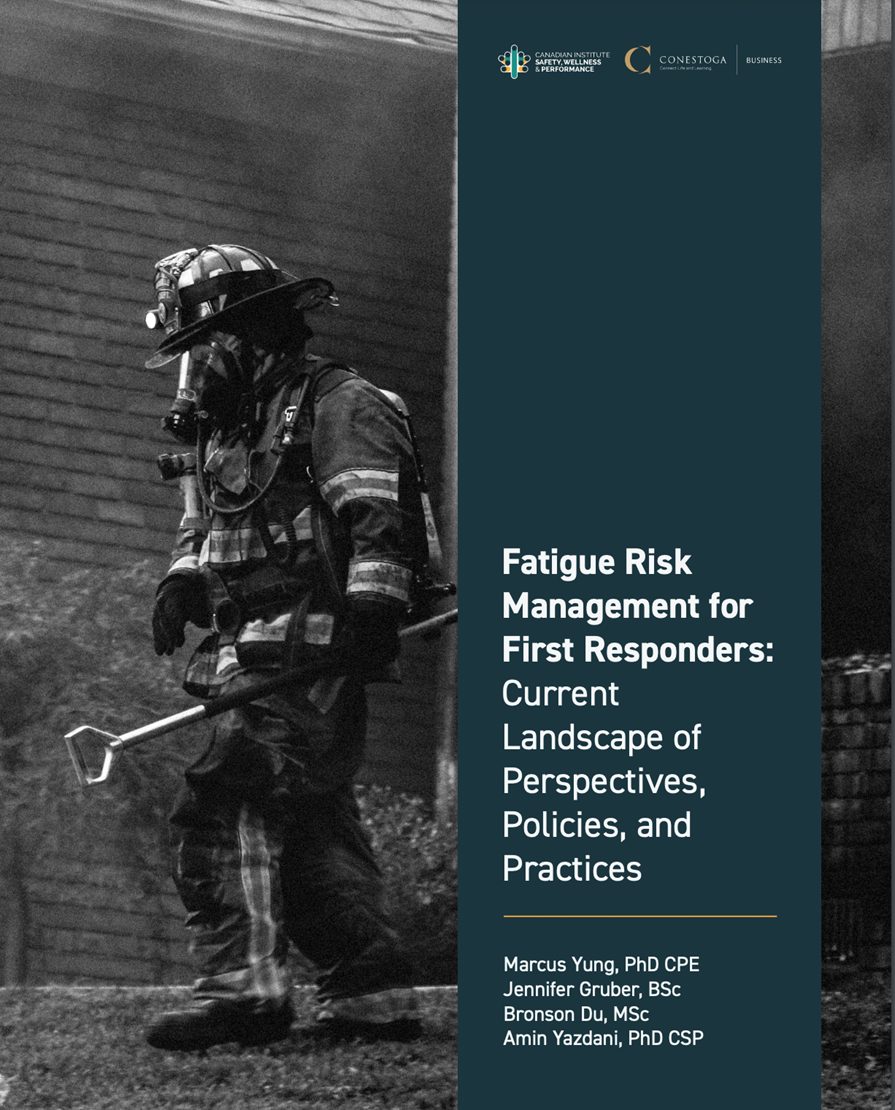Fatigue Risk Management for First Responders: Current Landscape of Perspectives, Policies, and Practices

Objective for CSSP-2018-CP-2366
Our objective is to develop a consensus-based, evidence-informed national Standard on First Responder Workplace Fatigue Risk Management that will provide an approach to systematically preventing and managing workplace fatigue by addressing it in a strategic, coordinated approach, and as part of a broad organizational management framework.
How this milestone supports the objective for CSSP-2018-CP-2366
This milestone will contribute to the development of a Seed Document that will be used to develop a national Standard, in accordance with CSA Groups’ accredited standards development process. This report describes the “Research and Synthesis of Evidence” phase, specifically key informant interviews of first responder personnel of their lived experience with fatigue, its impact on their health and performance, organizational policies, practices, and programs, and both personal and organizational risk mitigation strategies. The objective of this scoping review was to broadly identify relevant research pertaining to fatigue risk management and synthesize the research to inform aspects of risk management model known as the RACE model (recognize hazards, assess risks, implement controls, and evaluate effectiveness of controls) that will be integrated into a broader management system framework using Plan-Do-Check-Act (PDCA).
Background
First responders are at high risk of suffering from decrements in neurocognitive and physical performance related to fatigue. Such performance decrements endanger not only the personal health and safety of these responders but also the health and safety of their fellow responders and the public they serve. Fatigue may also be a precursor to adverse longer-term outcomes, such as musculoskeletal disorders, cardiovascular disease, and mental health disorders. Appropriate management, policymaking, standards, guidance, and research activities can reduce the exposure to these fatigue-related risks and hazards before they pose significant problems during emergency response operations.
Methods
We conducted a needs assessment by interviewing key informants to discuss their perspectives on fatigue, workplace policies, and both personal and organizational practices to mitigate fatigue risk. Participants represented three first responder occupations across Canada: firefighting, police services, and paramedic services. Participants were frontline personnel or managers. Interviews were audio recorded, transcribed, and analyzed for overarching themes.
General Findings
The lived experiences of key informants were analyzed into themes that were organized into a broad management systems model using the Plan-Do-Check-Act framework. Participants attributed fatigue to sleep and mental exhaustion, physical fatigue during work, and burnout. Outcomes of fatigue included deficits in work performance, impacts on their health and wellness, and challenges in their personal and family life. Specific and comprehensive workplace written policies often do not exist; participants who have limited fatigue policies in their workplace expressed the need for improvements to address content and implementation deficiencies. All participants believed fatigue was worth addressing in their workplace and that fatigue risk management should be a shared responsibility between employees and employers. Identifying and education personnel and management on the potential impact or outcome of fatigue may help motivate the organization to support a fatigue risk management system. Participants identified three broad types of risk factors: shift duration and pattern, task and work environment, and staff level. Assessment tools were primarily informal, based on self-assessments and partner-observations of the signs and symptoms of fatigue, and formal incident investigations were common. Risk mitigation strategies ranged from administrative (provisions for napping, shift schedules, support programs), personal (regimented sleeping habits, improved sleep quality at home, short-term solutions), and employee recruitment and training. All key informants indicated that there is no follow-up of prevention activities nor are there any policies, programs, or practices of corrective and preventative activities after implementing a risk control action.
Conclusion
Obtaining key informant insight towards the extent, impact, and management of fatigue contribute to the development of a Canadian fatigue risk management standard for first responders. Although participants understood the potential consequences of fatigue and expressed the desire to reduce its effects, current workplace strategies for fatigue risk management are reactionary, risk assessment tools are informal, and control strategies are much to be desired. Recommendations ranged from providing space within a base to facilitate restful sleep, offering a range of shift patterns to match an individual’s chronotype, and improving the training for personnel during early education, support throughout employment, and training for managers. Participants recommended that training should be delivered by individuals who are credible (with similar lived experience) and knowledgeable.

